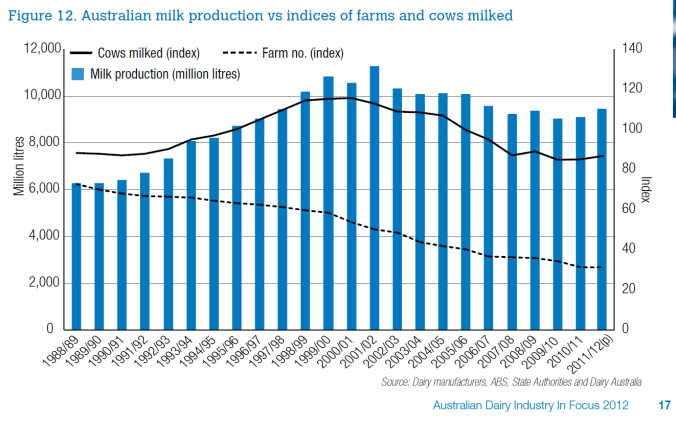A group of young Gippsland dairy farmers say times are tough but not at crisis point, said well-known dairy consultant John Mulvany during an ABC Radio interview yesterday.
When I ask myself whether it feels like I am in a “dairy crisis”, the answer is a perplexing “yes and no”.
We will get through this year battle-weary but pretty much unscathed and the bank is still very supportive. The co-op recently delivered us a modest price increase, which included back-pay and that was very helpful. I hope I’m not jinxing myself by saying this but the autumn break has arrived, everything is green and growing and new seed is in the ground.
But when I look at why things are undoubtedly “tough”, that’s when it feels like a crisis.
International dairy commodity prices are good
Right now, we are actually being paid very well. It just doesn’t feel like it for two reasons. First, those excellent prices are in US dollars, which means that by the time you convert those prices into Aussie dollars, the prices are a lot less spectacular. Second, the cost of making milk has increased faster than milk prices have risen.
Given that international dairy commodity prices are notoriously volatile, I’m not looking forward to the next cycle, when they are considered “weak”.
The strong Aussie dollar is not going away anytime soon
Business commentators are telling Australian exporters (and around half of our milk is exported) to get used to a strong Aussie dollar. It’s here to stay.
Input costs are tipped to keep rising
The price of power, refrigerants and fuel is only going to keep rising, along with wages and, in the long term, fertiliser. Interest rates cannot be expected to remain so low forever, either.
Smart farming programs withering as R&D slashed
There have been savage cuts to agricultural R&D right around the country, with massive job losses here in Victoria. We are going to have to look further afield for innovation leadership.
Conflicting messages about the future of farm-gate prices
We are constantly told a massive protein shortage will transform dairy farmers from paupers to princes. As dairy industry commentator, Steve Spencer, writes in the latest edition of the Farm Policy Journal:
“One of the significant challenges faced by the industry – especially export manufacturers who can’t keep up with customer demand – is that too few of their milk suppliers have bought into the story that the future holds great opportunity.”
Glad you noticed, Steve. And little wonder we’re not buying the story. Not only are we no more profitable now than we were a decade ago when “the story” was first floated, just a few weeks ago, ABARES forecasted a 36 cents per litre farm-gate price within five years – well below our cost of production.
Steve goes on to say that the dairy industry is missing many key ingredients “…building confidence, showcasing success, positive esteem…” and then poses a “…critical question for all parts of the industry: how to motivate people to look long, adjusting their businesses and attitudes to accept the cycles of the market and cashflow as inevitable?”.
Steve, I think that is what we have done and that is why some call it a dairy crisis. Rhetoric no longer cuts it. But I reckon you’re right that we farmers do need to start thinking about the big picture beyond the farm gate so we are ready not only to face the future but to recast it before it’s too late to find our feet in the new world order of dairying nations.
